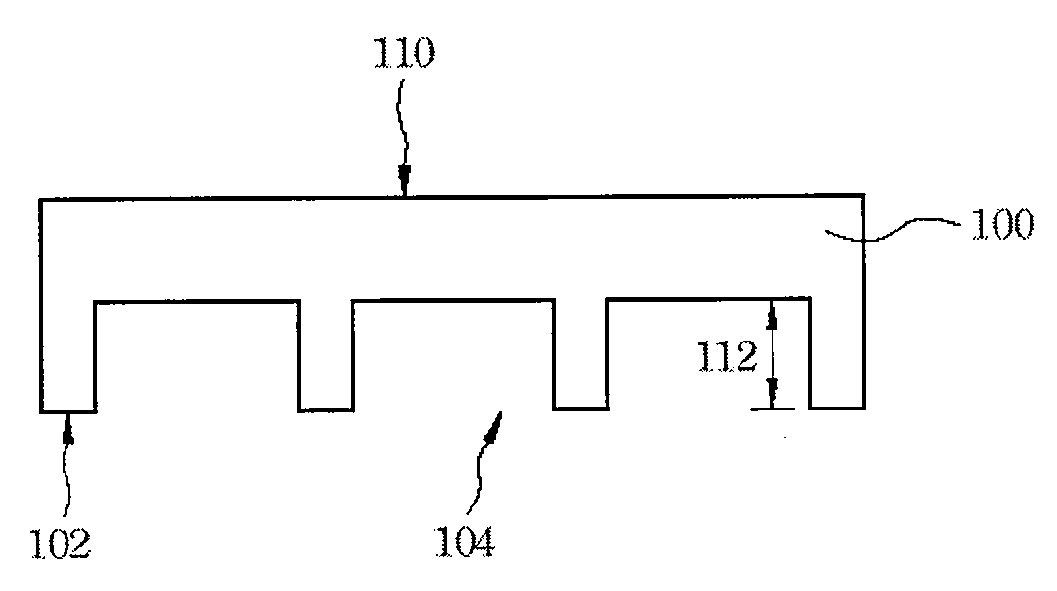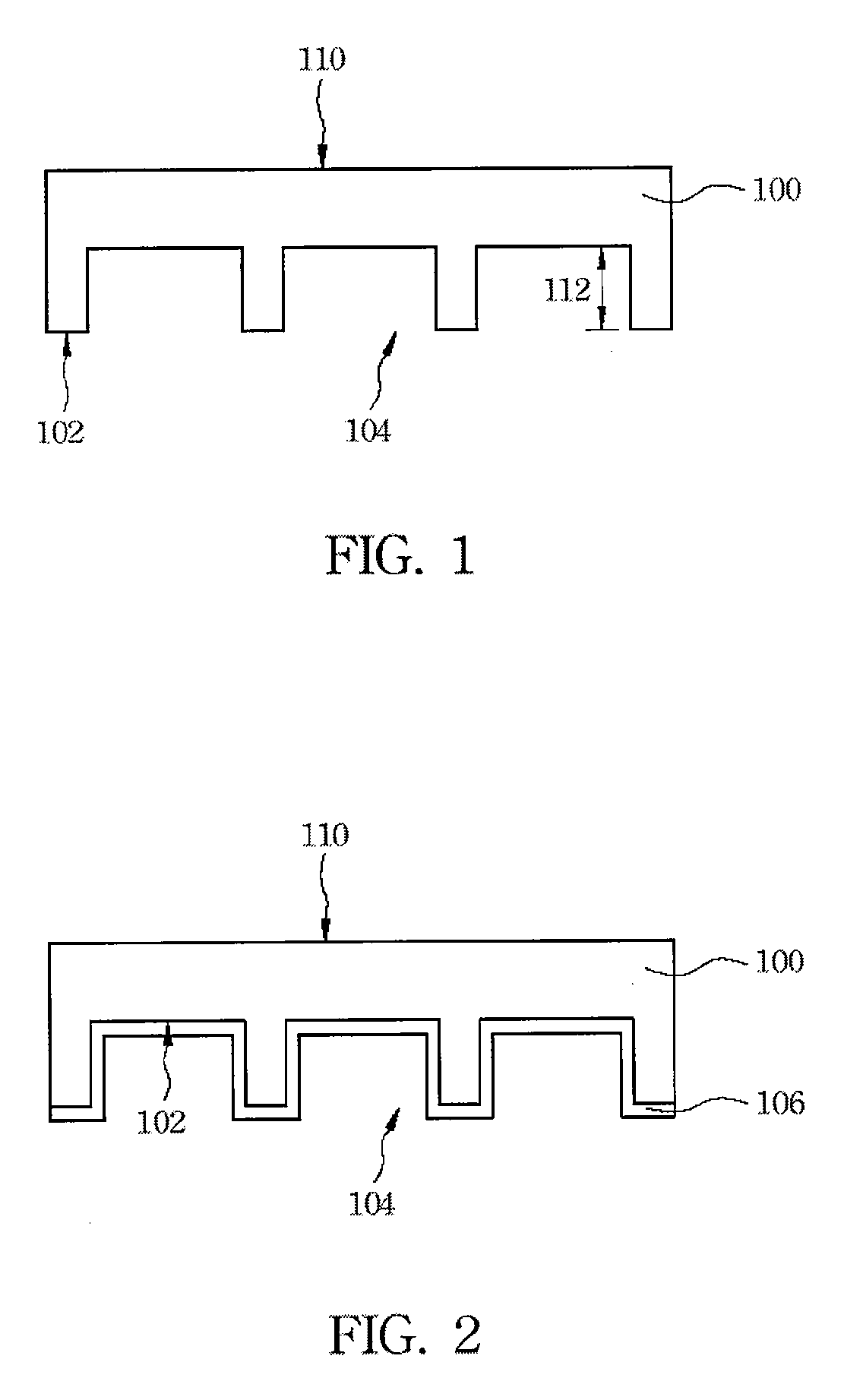Micro/Nano-Pattern Film Contact Transfer Process
a technology of nano-patterns and contact layers, applied in the field of micro-/nano-pattern film contact transfer process, can solve the problems of easy distortion or damage of patterns during the removal process of residual layers, time-consuming rise and decrease of temperature, and prolong the life of molds , the effect of easy mold manufacturing process
- Summary
- Abstract
- Description
- Claims
- Application Information
AI Technical Summary
Benefits of technology
Problems solved by technology
Method used
Image
Examples
Embodiment Construction
[0018]The present invention discloses a micro / nano-pattern film contact transfer process, which can directly transfer a transfer material onto a substrate, so that it is unnecessary to use a polymer material to form an etching mask in the sequential etching process, a pattern required by a nano-device can be directly defined and arrayed on the substrate, the transfer material is more various, and the problem of being difficult to control the size of a feature pattern of a flexible material can be solved. Accordingly, the transferring technique can achieve a large-area objective and advantages including low cost, rapid and mass production. In order to make the illustration of the present invention more explicit, the following description is stated with reference to FIGS. 1 through 11B.
[0019]FIGS. 1 through 10 are schematic flow diagrams showing micro / nano-pattern film contact transfer processes in accordance with preferred embodiments of the present invention. In an exemplary embodim...
PUM
| Property | Measurement | Unit |
|---|---|---|
| light wavelength | aaaaa | aaaaa |
| light wavelength | aaaaa | aaaaa |
| wavelength | aaaaa | aaaaa |
Abstract
Description
Claims
Application Information
 Login to View More
Login to View More - R&D
- Intellectual Property
- Life Sciences
- Materials
- Tech Scout
- Unparalleled Data Quality
- Higher Quality Content
- 60% Fewer Hallucinations
Browse by: Latest US Patents, China's latest patents, Technical Efficacy Thesaurus, Application Domain, Technology Topic, Popular Technical Reports.
© 2025 PatSnap. All rights reserved.Legal|Privacy policy|Modern Slavery Act Transparency Statement|Sitemap|About US| Contact US: help@patsnap.com



